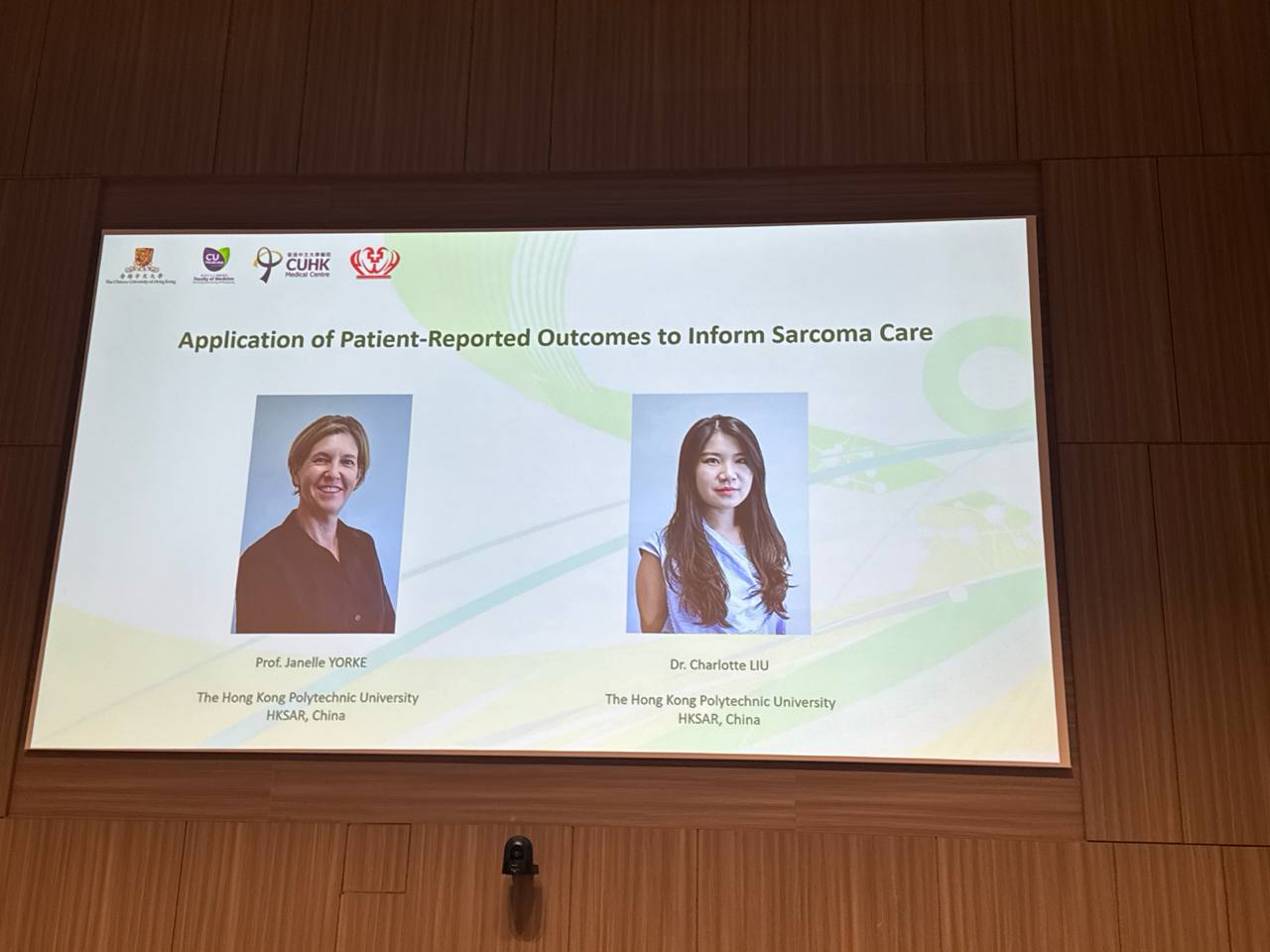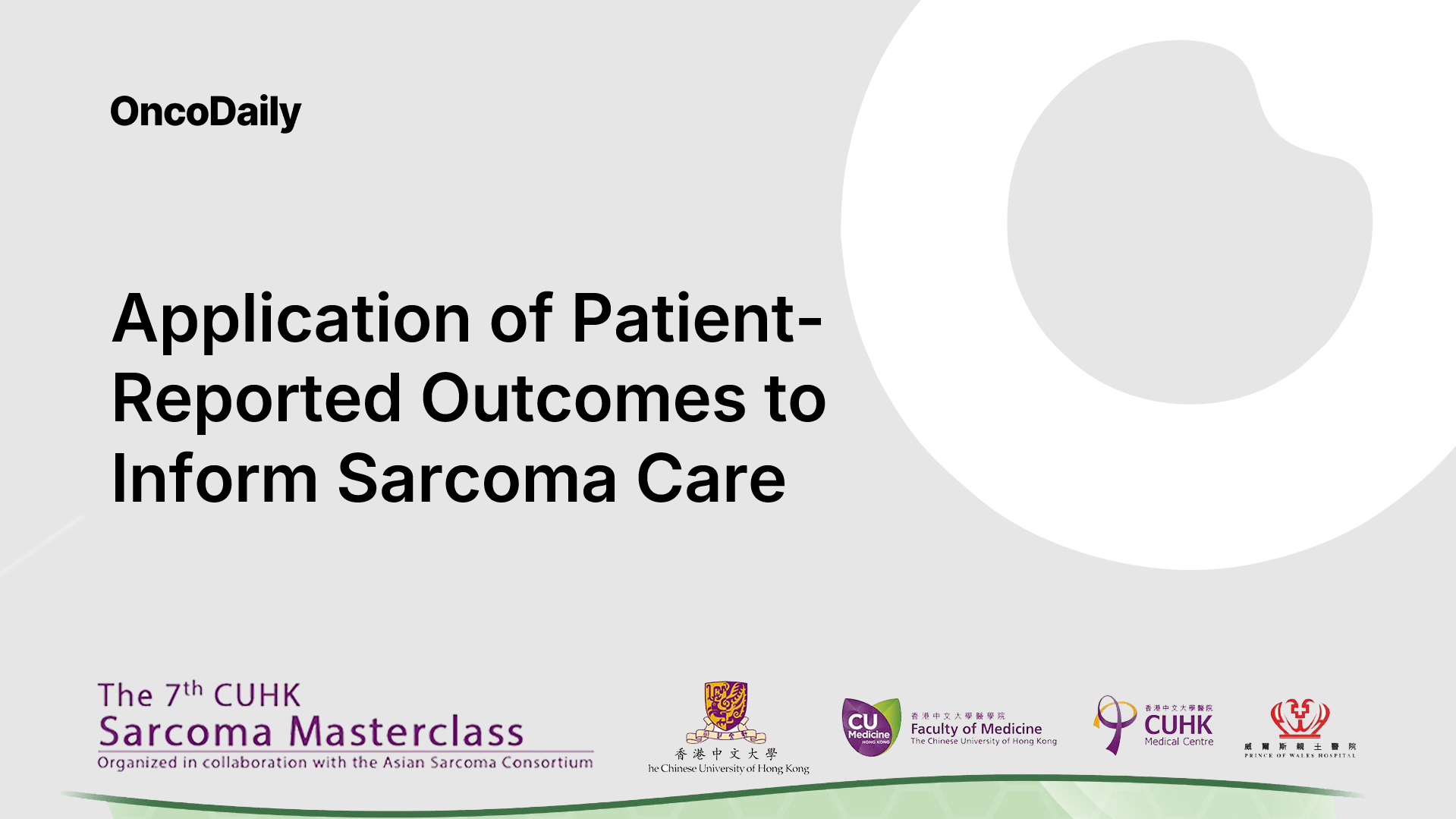ePROMs (Patient-Reported Outcomes) in sarcoma care were the focus of a lecture delivered by Professor Janelle Yorke and Dr. Charlotte Liu during the CUHK Sarcoma Masterclass 2025. Their session explored how electronic patient-reported outcomes (ePROMs) can be integrated into routine clinical practice to improve symptom monitoring, enhance quality of life, and empower patients. Drawing on oncology-wide evidence and findings from a recent qualitative meta-synthesis of sarcoma patient experiences, they demonstrated how these tools can transform care for individuals living with this rare and complex disease.

Background: The Value of Patient-Reported Outcomes
In cancer care, patient-reported outcomes (PROs) capture a patient’s own description of their symptoms, side effects, and overall quality of life without interpretation by a clinician. When digitized, these reports become electronic patient-reported outcomes (ePROMs), offering a way for patients to record their experiences in real time and for clinicians to integrate this information directly into care pathways.
The need for such tools stems from a well-recognized gap in oncology practice: clinicians often underestimate both the severity and frequency of treatment-related side effects. While clinical assessments focus on measurable toxicities, they may miss the subjective burden of fatigue, pain, nausea, psychological distress, or changes in daily functioning that profoundly shape a patient’s experience. This discrepancy is especially relevant in sarcoma, where treatments are complex, disease courses are prolonged, and patients often experience wide-ranging physical, emotional, and social challenges.
Evidence from other cancer populations has shown that integrating ePROMs into routine care can deliver multiple benefits. Large-scale studies in chemotherapy settings demonstrate that ePROMs improve symptom control, enhance quality of life, and even increase the likelihood that patients complete their planned treatment. Importantly, recent data also suggest a survival benefit, with patients monitored through ePROMs living longer than those receiving usual care. These findings have led professional societies, including the European Society for Medical Oncology (ESMO), to recommend systematic adoption of ePROMs in oncology practice.
For sarcoma patients—who represent a small but diverse cancer population—the potential of ePROMs is particularly striking. Sarcoma treatment often involves surgery, chemotherapy, radiotherapy, and long-term follow-up, placing heavy demands on patients and healthcare systems alike. By capturing and monitoring patient experiences over time, ePROMs can bridge the gap between medical outcomes and lived reality, providing clinicians with richer information for decision-making while empowering patients to take a more active role in their own care.
Implementation and Benefits of ePROMs
At Christie Hospital in Manchester, one of the largest cancer centers in Europe, ePROMs have been successfully implemented. Patients receive automated text messages prompting them to complete symptom and quality-of-life questionnaires, which integrate directly into electronic health records. Clinicians can review results before consultations, enabling more focused and patient-centered discussions.
The program has scaled rapidly, now including nearly 100,000 ePROM responses from around 40,000 patients across multiple cancer groups. Data integration has enabled predictive modeling for survival and treatment completion, further underscoring the utility of patient-reported information. Importantly, both patients and clinicians report high satisfaction: patients feel heard and empowered, while clinicians benefit from more efficient, targeted consultations.
Sarcoma-Specific Opportunities
Sarcoma patients face unique challenges: diverse treatment effects, long-term surveillance, frequent hospital visits, and psychological distress linked to disease rarity and prognosis. ePROMs offer clear solutions by supporting personalized symptom tracking, long-term remote monitoring, reduced hospital visits, and patient empowerment . Given sarcoma’s multidimensional impact, tailoring ePROMs to capture the lived experiences of patients is critical to enhancing patient-centered care.
The Meta-Synthesis: Experiences and Needs of Sarcoma Patients
Dr. Charlotte Liu presented findings from a recently published meta-synthesis in the European Journal of Oncology Nursing (Q1 journal), which systematically reviewed 27 qualitative studies on sarcoma patient experiences .
The study revealed three major themes:
- Physical Health and Body Image – Patients often face profound physical limitations and changes in body image following treatment.
- Emotional Impact – Feelings of shock, uncertainty, anxiety, and depression are common, although some patients adapt positively by focusing on achievable goals.
- Support Needs – Beyond clinical management, patients require psychosocial support, clear communication, and continuity of care.
- The research emphasizes that understanding these experiences is essential for tailoring ePROMs and ensuring that digital tools reflect real patient priorities.
Conclusion
The lecture by Professors Yorke and Liu underlined that ePROMs are more than a technological tool—they represent a paradigm shift toward patient-centered sarcoma care. By systematically capturing the lived experiences of patients, ePROMs can improve symptom management, enhance quality of life, empower patients, and potentially extend survival. While sarcoma-specific applications are still in early stages, ongoing research and integration into care pathways hold promise for transforming the way this rare and challenging cancer is managed.
You can read the abstract here.
